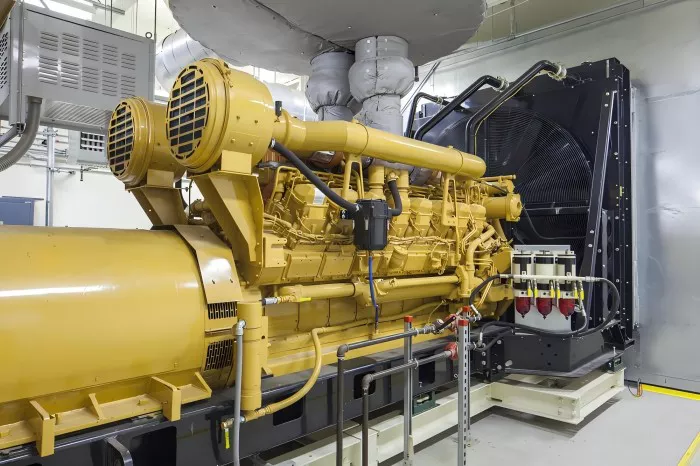Selecting the appropriate size of a diesel generator is crucial to ensure that it meets your power requirements efficiently and reliably. An undersized generator may not handle the load effectively, while an oversized one can be less efficient and more costly. This guide provides a comprehensive approach to determining the right size diesel generator for your specific needs.
1. Understanding Your Power Requirements
1.1 Assess Your Power Needs
Identify Key Loads: Begin by listing all the appliances, equipment, and systems you need to power. This includes critical items such as HVAC systems, refrigeration units, lighting, and any other essential machinery.
Calculate Total Wattage: Determine the total wattage required by summing up the wattage of each device. Remember to account for both running watts and starting watts. Starting watts are typically higher and necessary to start motors or appliances with large startup currents.
Consider Peak Load: Identify the peak load requirements, which occur when multiple devices are running simultaneously. Ensure that the generator can handle this peak load to avoid overloading.
1.2 Factor in Future Expansion
Plan for Growth: If you anticipate adding more equipment or expanding operations in the future, consider these additional power requirements when selecting your generator. It’s often more cost-effective to choose a slightly larger generator than to upgrade later.
Flexible Power Solutions: Some generators come with options for modular expansion, allowing you to add more capacity as needed without replacing the entire unit.
2. Generator Sizing Calculations
2.1 Manual Calculation Method
Step 1: List Devices and Wattage: Write down all the devices you plan to power, including their wattage requirements.
Step 2: Sum the Running Watts: Add up the running wattages of all devices that will be operating simultaneously.
Step 3: Add Starting Watts: Include the starting watts for devices with high startup currents.
Step 4: Calculate Total Power Requirement: Combine the running and starting watts to determine the total power requirement.
Step 5: Apply Safety Margin: Add a safety margin (typically 20-25%) to account for unexpected power surges and to ensure the generator operates efficiently.
2.2 Using Online Sizing Tools
Online Calculators: Many generator manufacturers and suppliers offer online sizing calculators that simplify the process. Input your equipment details, and the tool will provide a recommended generator size.
Consulting with Experts: If you’re unsure about the calculations or have complex power needs, consulting with a professional can provide accurate recommendations and ensure that all factors are considered.
3. Types of Diesel Generators
3.1 Portable Diesel Generators
Use Case: Ideal for temporary power needs, outdoor events, or as a backup power source for small to medium-sized applications.
Power Range: Typically ranges from 1,000 to 10,000 watts.
Features: Compact design, ease of transport, and quick setup.
3.2 Standby Diesel Generators
Use Case: Suitable for permanent installations as backup power for homes, businesses, or critical infrastructure.
Power Range: Ranges from 10,000 to 100,000 watts or more.
Features: Automatic start-up, higher capacity, and robust construction for continuous use.
3.3 Industrial Diesel Generators
Use Case: Designed for large-scale applications such as factories, data centers, and commercial facilities requiring substantial power.
Power Range: Often exceeds 100,000 watts, with some models providing several megawatts of power.
Features: High efficiency, long run times, and advanced control systems.
see also: Evaluating Diesel Generators for Residential Power Supply: Capabilities and Considerations
4. Generator Efficiency and Load Management
4.1 Optimal Load Utilization
Load Matching: Ensure that the generator operates close to its rated capacity to achieve optimal efficiency. Running a generator at less than 30% of its capacity can lead to fuel wastage and reduced lifespan.
Load Management Systems: Consider implementing load management systems that automatically balance and prioritize power distribution to ensure efficient operation.
4.2 Fuel Efficiency
Diesel Consumption: Diesel generators are known for their fuel efficiency, especially when operating at or near full load. Choose a generator with good fuel consumption rates to minimize operational costs.
Regular Maintenance: Proper maintenance and servicing can improve fuel efficiency and extend the lifespan of the generator.
5. Additional Considerations
5.1 Noise Levels
Decibel Ratings: Consider the noise levels of the generator, especially if it will be used in residential or noise-sensitive areas. Look for models with noise reduction features or enclosures.
5.2 Installation and Space Requirements
Site Preparation: Ensure there is adequate space for the generator, including space for ventilation and maintenance. Follow the manufacturer’s recommendations for installation and clearance.
Professional Installation: For larger or more complex installations, professional installation services can ensure proper setup and compliance with local regulations.
Conclusion
Choosing the right size diesel generator involves a thorough understanding of your power needs, careful calculations, and consideration of various factors such as future expansion, efficiency, and installation requirements. By following this guide and considering the specific needs of your application, you can select a generator that provides reliable and efficient power while minimizing operational costs and ensuring long-term performance.
Related topics:
- How To Buy a Diesel Generator
- The Inner Workings of Diesel Generators
- What Is the Working Principle of Diesel Generator

